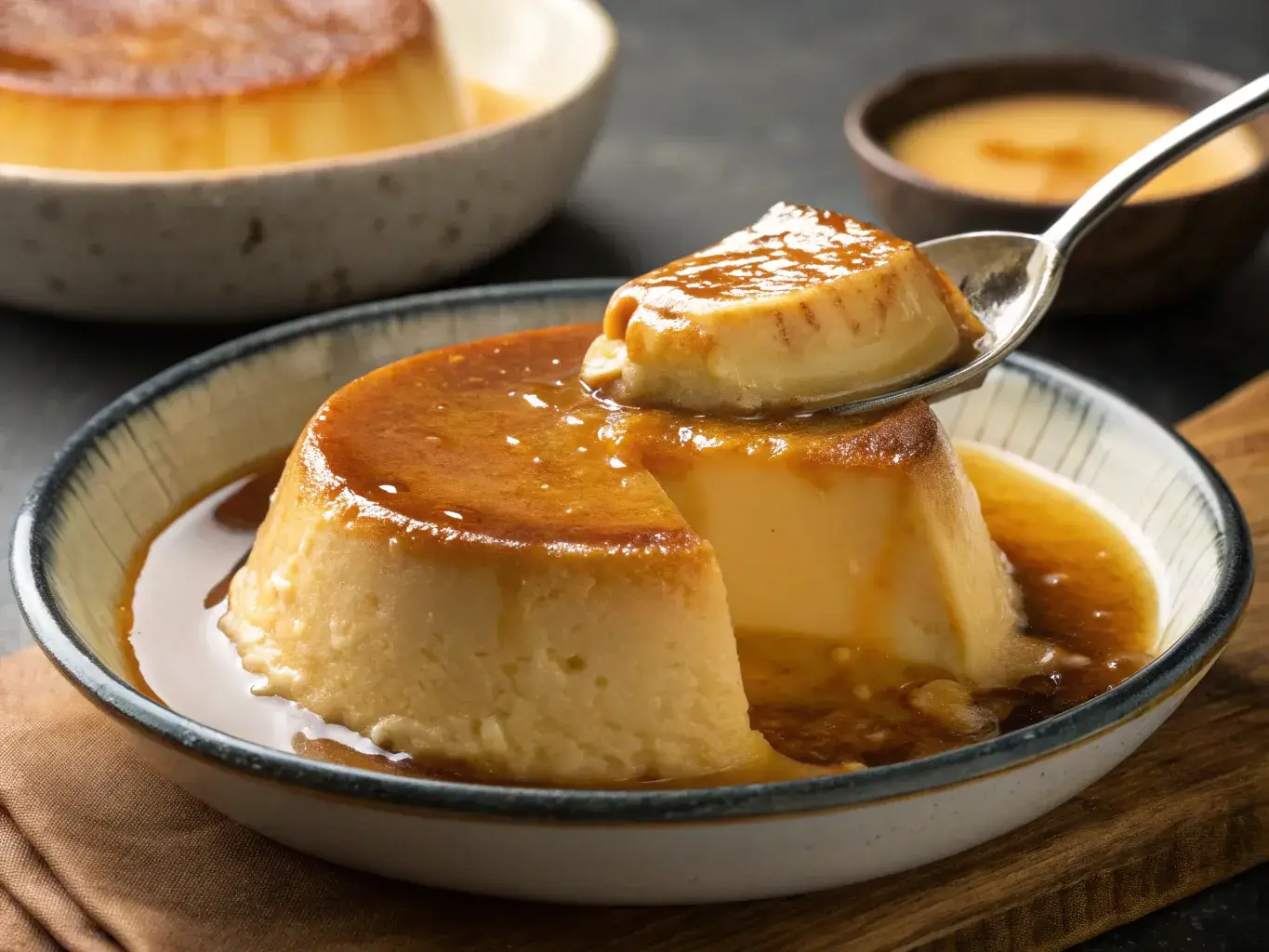Discover the Secrets of the Most Luxurious Custardy French Dessert NYT Has Featured
The art of creating a perfect custardy French dessert is an experience in itself, full of delicate textures, rich flavors, and the charm of classic French culinary techniques. If you’ve ever enjoyed a delectable custardy French dessert NYT has highlighted, you’ll understand why these desserts have captured the attention of food lovers everywhere. Today, we dive into the essence of these treats, exploring what makes them irresistible and how you can recreate their magic in your kitchen.
What Is a Custardy French Dessert?
A custardy French dessert is a sweet dish that relies on a creamy mixture of eggs, sugar, milk, or cream to create a soft, smooth texture that melts in your mouth. Custard desserts are a cornerstone of French cuisine, renowned for their elegance and the luxurious way they conclude a meal. Examples include crème brûlée, clafoutis, and the lesser-known but equally divine pots de crème.
Custards are loved for their delicate balance between sweetness and creaminess. They offer a velvety texture that is comforting and indulgent. The allure of custard lies in its versatility—whether baked or stirred, flavored with vanilla or fruits, each custard dessert holds a different experience that caters to varied tastes.
For an even deeper dive into the magic of French cuisine, consider learning about the art of classic French cooking and its influence on desserts like custards. French desserts are not just about the ingredients—they are about the methods, precision, and a touch of romance.
Print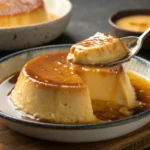
The Ultimate Guide to Custardy French Dessert NYT-Style
- Total Time: 50 min
- Yield: 6 servings 1x
- Diet: Vegetarian
Description
A custardy French dessert made with fresh cherries baked into a lightly sweetened vanilla-scented batter. This rustic dish, similar to one featured in NYT Cooking, is perfect served warm or chilled with a dusting of powdered sugar.
Ingredients
- 3 large eggs
- 1/2 cup granulated sugar
- 1 cup whole milk
- 1/2 cup heavy cream
- 2 tsp vanilla extract
- 1/8 tsp almond extract (optional)
- 1/4 tsp salt
- 2/3 cup all-purpose flour
- 2 cups fresh sweet cherries, pitted (or frozen, thawed and drained)
- 1 tbsp unsalted butter (for greasing)
- Powdered sugar, for serving
Instructions
- 1. Preheat oven to 350°F (175°C). Generously butter a 9-inch pie dish or baking dish.
- 2. In a mixing bowl, whisk eggs and sugar until pale and frothy.
- 3. Add milk, cream, vanilla, almond extract (if using), and salt. Whisk to combine.
- 4. Gently whisk in the flour until smooth. The batter will be thin.
- 5. Scatter cherries evenly in the buttered dish. Pour the batter over the cherries.
- 6. Bake for 35–40 minutes or until puffed, golden, and a knife inserted near the center comes out clean.
- 7. Cool slightly before serving. Dust with powdered sugar and serve warm or chilled.
Notes
- Traditional clafoutis uses unpitted cherries in France, but for ease and safety, pitted cherries are common.
- Swap cherries for other stone fruit or berries in season.
- The texture is a cross between flan and pancake—delicate and creamy.
- Prep Time: 10 min
- Cook Time: 40 min
- Category: Dessert
- Method: Baking
- Cuisine: French
Nutrition
- Serving Size: 1 slice
- Calories: 210
- Sugar: 20g
- Sodium: 85mg
- Fat: 10g
- Saturated Fat: 6g
- Unsaturated Fat: 4g
- Trans Fat: 0g
- Carbohydrates: 25g
- Fiber: 1g
- Protein: 5g
- Cholesterol: 105mg
Keywords: clafoutis, custard dessert, cherry clafoutis, French dessert, NYT inspired
History of Custard Desserts in French Cuisine
French custard desserts date back to medieval times, when custards were a symbol of luxury and refinement. They were reserved for the most special occasions, often gracing the tables of nobility. The classic crème brûlée, with its contrasting layers of creamy custard and crunchy caramelized sugar, has become a signature dessert recognized worldwide.
Similarly, clafoutis, a custard-based dessert with baked fruit (often cherries), was a staple in the French countryside. Farmers would use fresh, seasonal fruits, covering them with a smooth batter that, once baked, resulted in a delightful fusion of sweet and tart flavors, crowned with a custard-like texture. For more on the history of French desserts, check this article by TasteAtlas.
The Science Behind Custardy French Dessert NYT
Custard desserts rely on the process of coagulation to achieve their silky texture. When eggs are heated, the proteins in the egg whites and yolks begin to unfold and bind together, forming a network that thickens the mixture. This process is delicate—too much heat or overcooking can lead to curdling while undercooking can leave the custard too runny.
A perfect custard requires a balance of ingredients and temperature control. The addition of sugar, cream, or milk influences the texture and flavor, while a gentle heat ensures that the proteins are set without becoming too firm. This is why many custard recipes require a water bath or double boiler to moderate the cooking temperature.
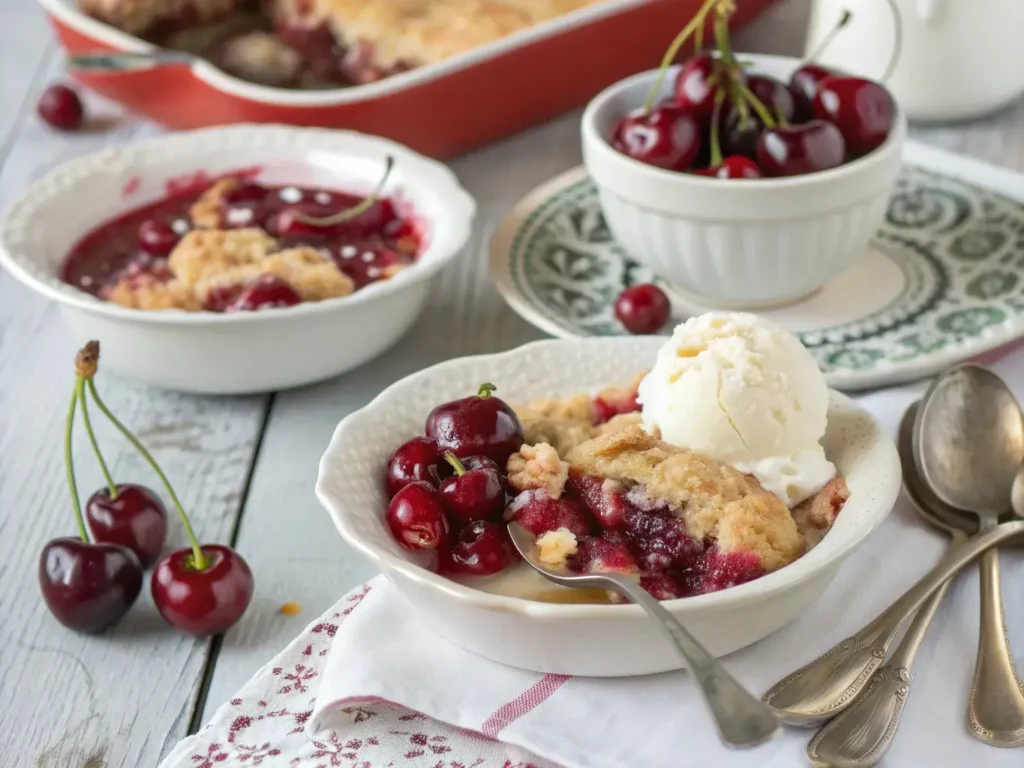
Understanding the Ingredients Custardy French Dessert NYT
- Eggs: The primary thickening agent in custards, eggs provide the necessary protein structure. Egg yolks give richness, while egg whites offer a firmer texture.
- Cream and Milk: The ratio of cream to milk affects the texture. More cream results in a richer custard, while milk makes it lighter.
- Sugar: Sugar sweetens the custard and influences the texture by interacting with the egg proteins.
- Flavorings: Vanilla, citrus zest, chocolate, or even liqueurs can be used to add depth and complexity to custard desserts.
Temperature Control
Temperature plays a crucial role in achieving the perfect custard texture. Too high a temperature can cause the eggs to scramble, resulting in a grainy custard. The ideal temperature for cooking custard is between 170-180°F (77-82°C). Using a thermometer can help ensure consistent results.
The Most Popular custardy French dessert NYT
Let’s explore some of the most beloved custardy French desserts that have been featured by NYT and beyond.
1. Crème Brûlée
Crème brûlée is perhaps the most famous custard dessert. This classic treat is known for its creamy, rich custard base, flavored typically with vanilla, and topped with a layer of caramelized sugar that shatters under the spoon. The contrast between the crisp caramel and the creamy custard beneath makes it a favorite of many.
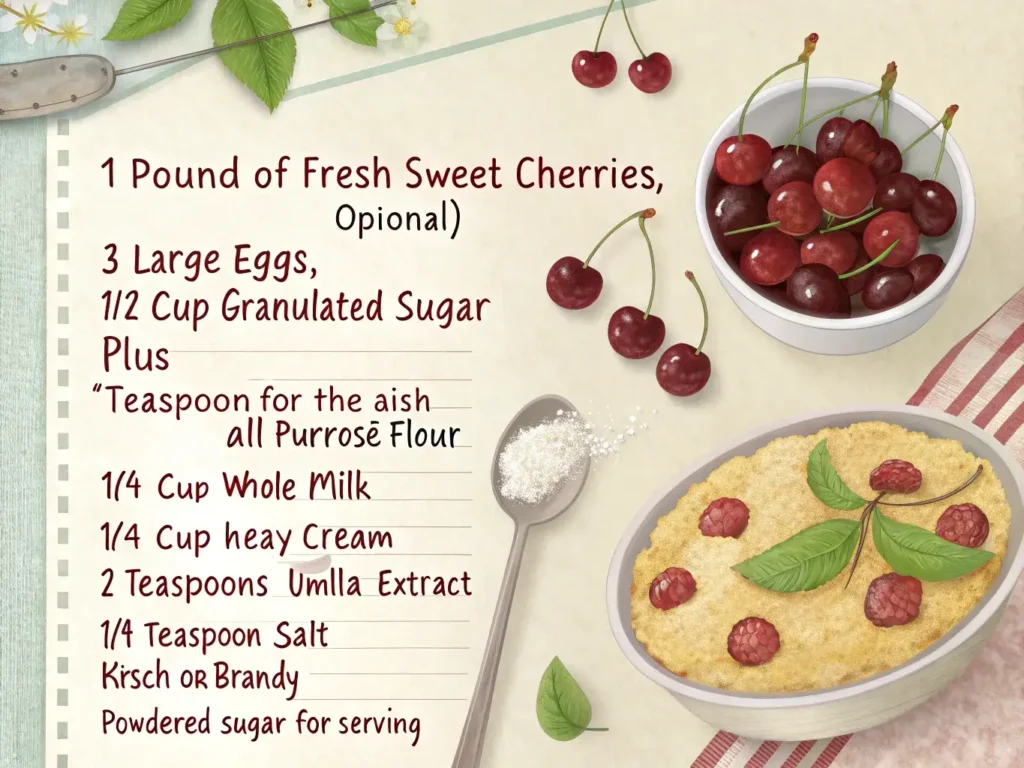
How to Make It:
- Ingredients: Egg yolks, heavy cream, sugar, and vanilla bean.
- Method: The mixture of cream, sugar, and vanilla is heated, combined with beaten egg yolks, and baked in a water bath.
- Pro Tip: Use a kitchen torch to caramelize the sugar for the ultimate finishing touch.
Variations: Crème brûlée can be customized by infusing the cream with different flavors such as lavender, espresso, or citrus zest, adding depth to the classic recipe.
2. Pots de Crème
A lesser-known but incredibly indulgent custard, pots de crème is a silky custard served in small pots or ramekins. This dessert is rich, with a more intense flavor than other custard-based dishes, often thanks to the addition of chocolate or coffee.
How to Make It:
- Ingredients: Egg yolks, heavy cream, sugar, and chocolate or coffee.
- Method: Heat the cream and sugar, mix with the flavoring, and slowly whisk into egg yolks before baking.
- Pro Tip: Make sure to serve it chilled with a dollop of whipped cream for added decadence.
Variations: Pots de crème can be made with a variety of flavors, such as vanilla, salted caramel, or hazelnut. Adding a pinch of sea salt can elevate the chocolate version to new heights.
3. Clafoutis
Clafoutis is a rustic French dessert that combines the creaminess of custard with the freshness of fruits. Cherries are the traditional fruit used, but clafoutis can also be made with peaches, apples, or berries.
How to Make It:
- Ingredients: Eggs, milk, sugar, flour, and cherries.
- Method: The batter is poured over cherries in a baking dish and baked until firm.
- Pro Tip: Dust the top with powdered sugar and serve it warm for the best experience.
Variations: For a twist, try making clafoutis with blueberries or raspberries, or adding a touch of almond extract for added depth of flavor.
4. Crème Caramel
Crème caramel, also known as flan, is a custard dessert topped with a layer of soft caramel. Unlike crème brûlée, which has a crunchy caramel top, crème caramel has a smooth, sauce-like caramel that coats the custard when unmolded.
How to Make It:
- Ingredients: Sugar, water, eggs, milk, and vanilla.
- Method: Caramelize sugar and water, pour into ramekins, add the custard mixture, and bake in a water bath.
- Pro Tip: Allow the caramel to harden in the ramekins before adding the custard to ensure an even distribution of caramel.
Variations: Adding a splash of dark rum or coffee to the custard can provide an extra layer of flavor.
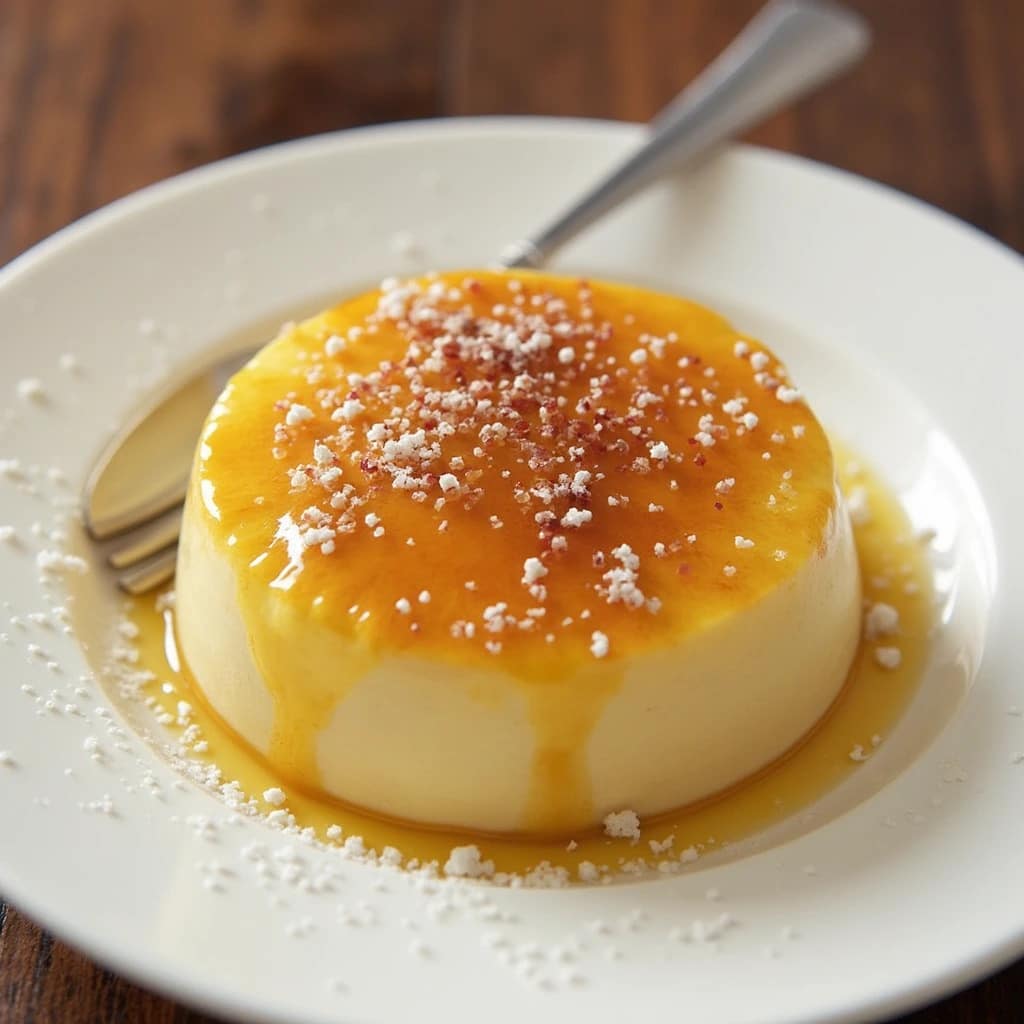
The Perfect Custardy French Dessert NYT Recipe: Step-by-Step
To make your custardy French dessert NYT enthusiasts would adore, follow this simple and foolproof recipe that guarantees a creamy, indulgent result every time.
Ingredients:
- 4 large egg yolks
- 2 cups heavy cream
- 1/2 cup granulated sugar
- 1 vanilla bean (or 1 teaspoon vanilla extract)
- A pinch of salt
Instructions:
- Prepare the Ingredients: Preheat your oven to 325°F (160°C). Split the vanilla bean and scrape out the seeds.
- Heat the Cream: In a saucepan, combine the heavy cream, vanilla bean seeds, and the pod. Heat over medium heat until steaming but not boiling.
- Mix Egg Yolks and Sugar: In a mixing bowl, whisk together the egg yolks, sugar, and salt until pale and well combined.
- Temper the Eggs: Gradually pour the hot cream mixture into the egg yolks, whisking continuously to avoid curdling.
- Strain the Mixture: Pour the mixture through a fine-mesh sieve to ensure a silky texture.
- Bake in a Water Bath: Divide the custard into ramekins and place them in a baking dish. Pour hot water halfway up the sides of the ramekins. Bake for 40–45 minutes until set but still jiggly in the center.
- Chill and Caramelize: Cool the custards, refrigerate for at least 2 hours, and sprinkle sugar on top before caramelizing with a torch.
Tips for Success:
- Room Temperature Eggs: Using room temperature eggs will help the custard mix more evenly and prevent lumps.
- Water Bath: The water bath is essential for even cooking, helping the custard to set gently without cracking or curdling.
Pairing Custard Desserts with Wine
French custard desserts pair wonderfully with a range of wines. The creaminess of custard is complemented by sweet, aromatic wines that balance the richness.
- Crème Brûlée: A classic pairing is Sauternes, a sweet wine from Bordeaux. Its honeyed notes match beautifully with the vanilla custard and caramelized sugar.
- Pots de Crème: For chocolate pots de crème, consider a Ruby Port or a rich Banyuls. The bold flavors of these wines enhance the intensity of the chocolate.
- Clafoutis: Pair clafoutis with a light, fruity wine such as Beaujolais or a sparkling Moscato. These wines bring out the fruitiness of the dessert and refresh the palate.
- Crème Caramel: Crème caramel pairs well with a late harvest Riesling or a light Moscato. The bright acidity of the wine balances the sweetness of the caramel.
Regional Variations of Custard Desserts in France
Custard desserts are popular across different regions of France, each offering a unique twist based on local ingredients and culinary traditions.
- Île-de-France: The classic crème brûlée is often associated with Paris and the Île-de-France region, where it’s served in many upscale bistros and restaurants.
- Alsace: In Alsace, custard desserts may incorporate regional fruits like apples or plums, often baked into clafoutis-style dishes.
- Provence: In Provence, custard-based desserts may feature lavender or honey, drawing inspiration from the aromatic herbs and produce of the region.
- Brittany: Brittany is known for its Far Breton, a custard-like dessert baked with prunes. It is denser than a typical custard, with a texture similar to clafoutis.
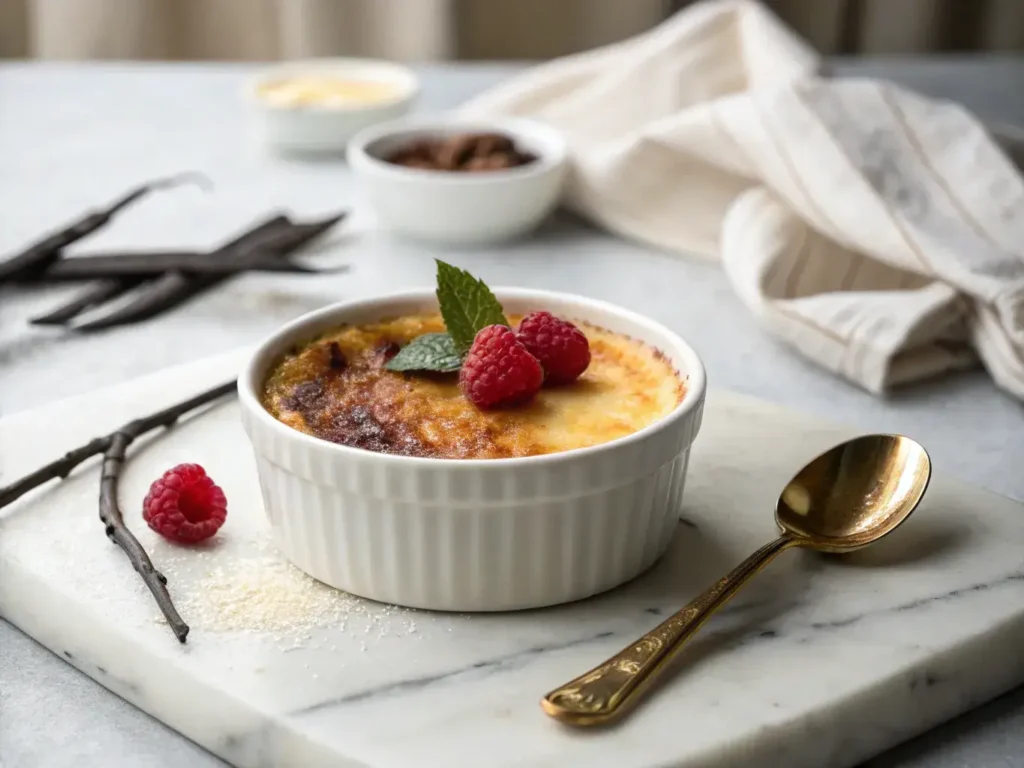
Tips for the Best Custardy French Dessert
- Use Fresh Ingredients: The quality of your cream, eggs, and flavorings makes a significant difference in the final flavor of your dessert.
- Avoid Overcooking: Custards should be creamy, not curdled. Monitor the baking time closely to ensure the perfect consistency.
- Invest in a Kitchen Torch: For desserts like crème brûlée, a kitchen torch allows you to create that perfect caramelized topping.
- Temperature Control: Use a thermometer to ensure your cream doesn’t boil. The ideal temperature is just below boiling, around 175-180°F (80-82°C).
- Chill Time: Allow enough time for chilling. Custards need several hours in the refrigerator to set properly and develop their full flavor.
- Flavor Infusion: Infusing the cream with herbs or spices, such as thyme, cinnamon, or star anise, can add an interesting twist to classic custards.
Frequently Asked Questions
What is the French Custardy French Dessert NYT crossword clue?
The answer to the popular crossword clue is often crème brûlée or flan. These are classic French custards that frequently appear in puzzles and quizzes.
What is the French dessert of soft custard?
A French dessert made of soft custard could refer to several options, including pots de crème, crème brûlée, or flan. These desserts are characterized by their smooth, creamy consistency.
What is the best custardy French dessert NYT featured?
One of the best custardy French desserts featured by NYT is undoubtedly crème brûlée, praised for its luxurious texture and perfect caramelized top. It embodies the quintessential qualities of a French custard dessert.
Can I make custard desserts without a water bath?
While it’s possible to make custard desserts without a water bath, the texture may suffer. The water bath helps to regulate the temperature and ensures even cooking, which is crucial for the creamy texture of custard.
How do I prevent my custard from curdling?
To prevent curdling, always cook custards gently over low heat. Temper the eggs by slowly adding hot cream, whisking constantly, and bake in a water bath to avoid overheating.
What are some common mistakes when making custard?
- Overcooking: Overcooking can cause the custard to become grainy and lose its smooth texture. Always cook gently and monitor the temperature.
- Skipping the Strain: Straining the custard mixture before baking removes any lumps, ensuring a silky final texture.
- Rushing the Chill Time: Custards need sufficient time to chill and set. Rushing this step can result in a runny texture.
How can I make a dairy-free Custardy French Dessert NYT?
To make a dairy-free custard, substitute the heavy cream and milk with alternatives such as coconut milk, almond milk, or cashew cream. Coconut milk works particularly well due to its rich texture.
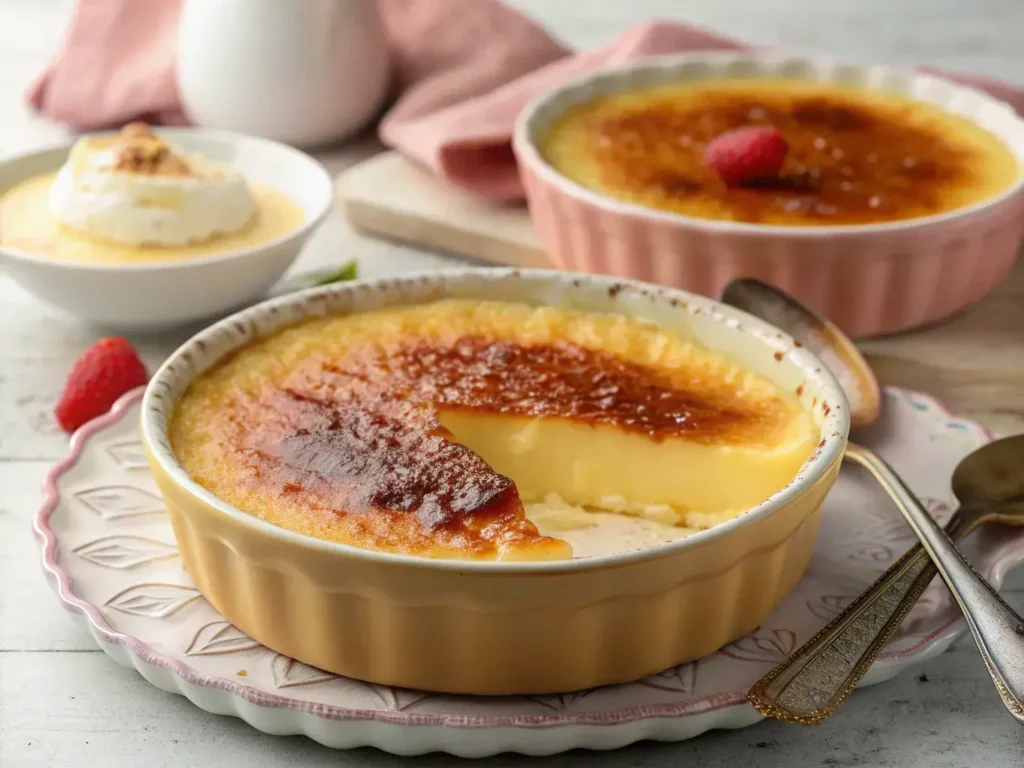
Conclusion
French custard desserts are more than just food, they are an experience. With their rich flavors, silky textures, and variety, these desserts offer something special for every occasion. Whether you’re creating a crème brûlée with its classic caramel crust, a comforting clafoutis, or an indulgent pots de crème, you’re bringing a taste of France into your kitchen.
Take the time to experiment with different flavors and techniques, and you’ll discover just how versatile and rewarding custard desserts can be. Whether you are a seasoned baker or just starting, these French classics are sure to impress your family and friends with their luxurious textures and sophisticated flavors.

